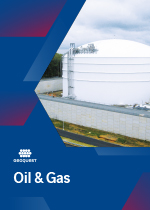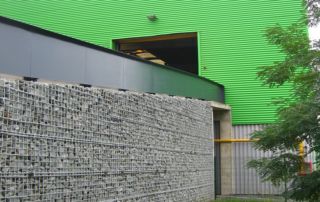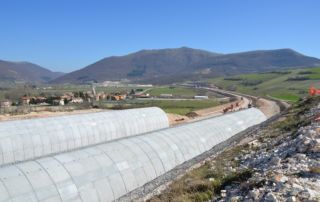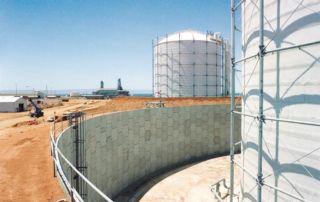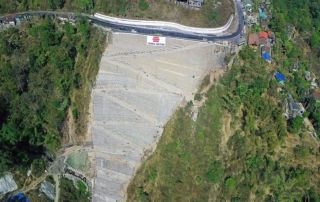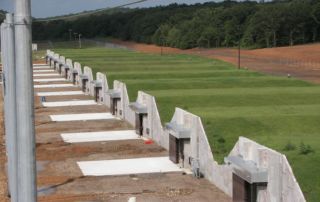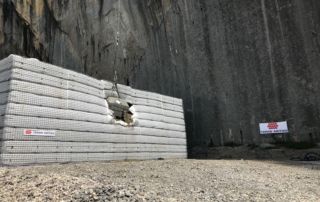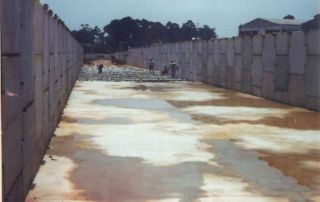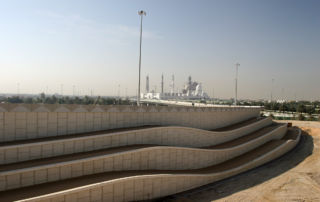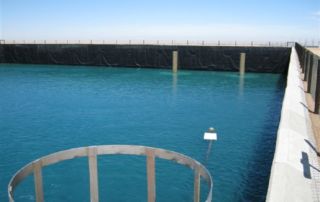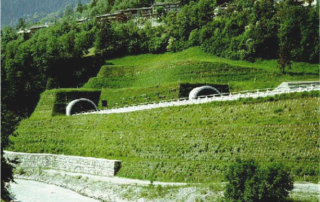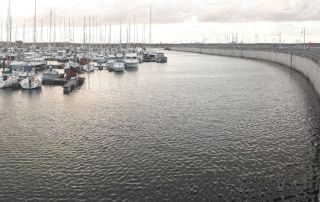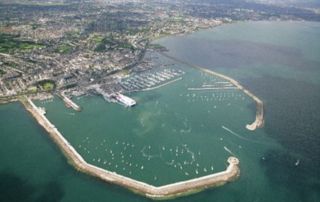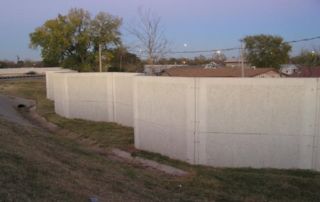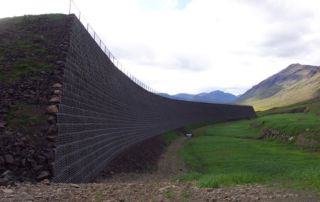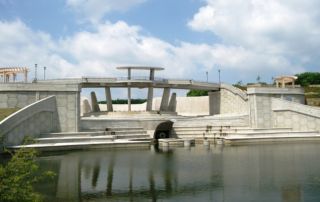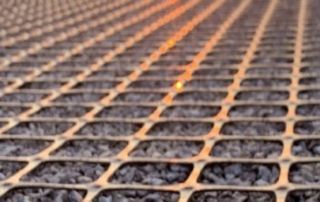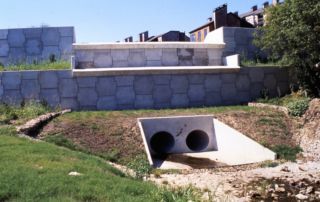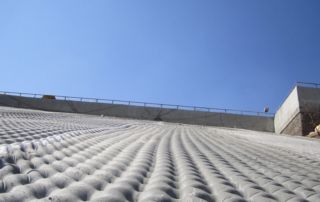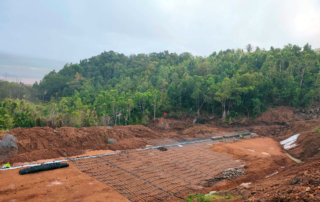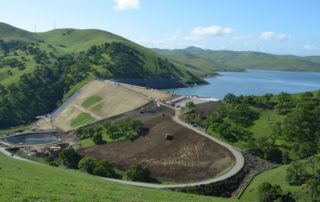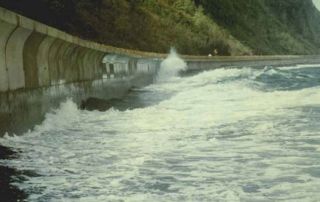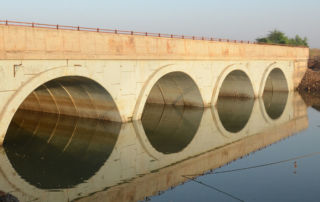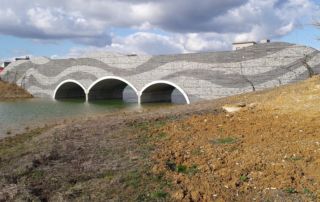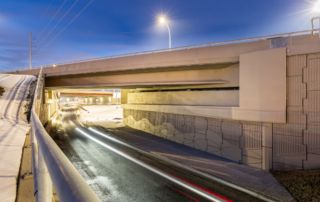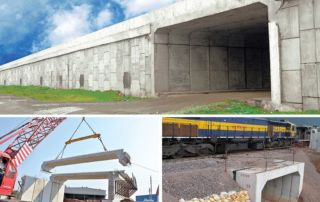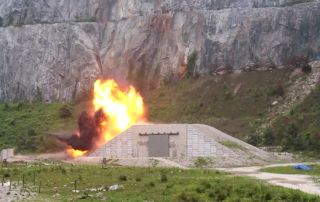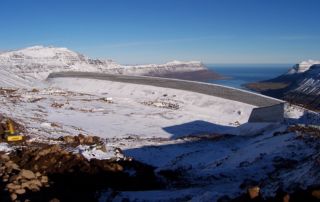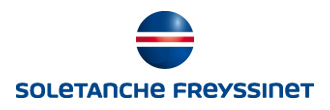Geoquest has partnered with Oil & Gas developers since 1973, and so this is familiar territory for our technical teams.
The strength, resilience and flexibility of our solutions give our clients confidence to meet their demands for designing structures under extreme loading conditions, situated on poor soils, and building in remote and environmentally sensitive locations.
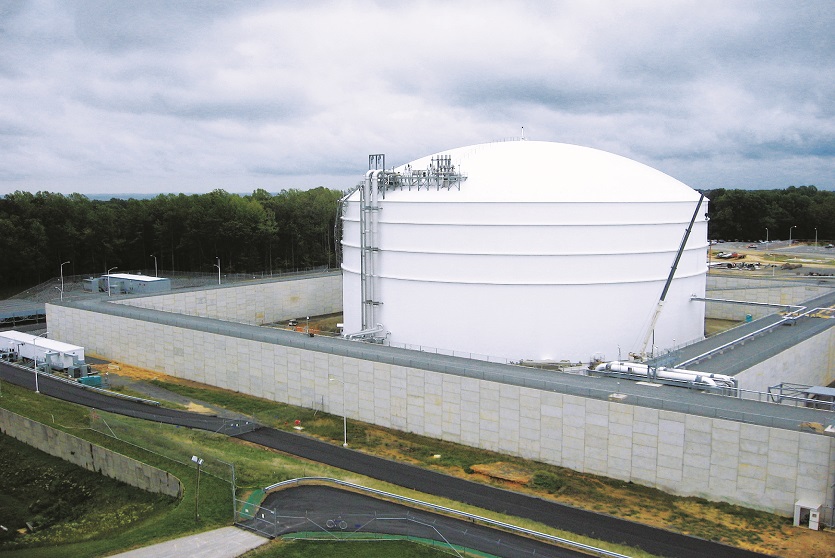
Site development: foundations
Development for industrial operations normally entails foundation preparations and stabilization. This work is carried out with our solutions using geogrids and geotextiles. Through our geo-line of solutions, we address sub-grade reinforcement, erosion control, drainage and waterproofing.
Site development: structures
The industrial-use landscape often requires large amounts of excavation, clearing and earth retention in support of future structures. Preparing for site access and permanent mobility calls for temporary and permanent grade separations, retaining walls, roads, bridges and platforms as normal parts of industrial siteworks. Geoquest answers to these needs with Reinforced Earth® walls and TechSpan® or TechBox™ bridges and culverts.e.
Production and processing
Geoquest solutions apply whether your project is upstream or downstream. Our experience extends to processing natural gas or crude oil, shale deposits or oilsands. Our structures support:
- Industrial haul roads
- Tipping and crusher pockets
- Settler pools and frothing tanks
- Live storage bunkers
- Pipeline enclosures
Containment
Storage tanks and impoundment facilities are key to Oil and Gas operations. Secondary containment of liquids stored in tanks mitigate risks and damage as a result of tank failures, accidental flooding, spills and leaks. Reinforced Earth® walls are built to create areas of confined space to impound spilled hazardous liquid for treatment, conveyance and controlled disposal.
Geoquest engineers are experts in designing containment solutions that are accepted worldwide. We use techniques and materials that are inherently designed to meet cryogenic safety standards for rapid thermal shock and explosions. Reinforced Earth® walls are proven through full-scale cryogenic testing and live accident documentation to perform under extreme conditions. For instance, stable structural performance at temperatures of -160 degrees C° for liquid natural gas, and up to a flame temperature of 1100 degrees C° has been documented. These walls are also routinely designed to mitigate damage caused by explosions and bombardment. A series of tests spanning 40 years confirms the efficient performance of Reinforced Earth® structures subjected to high-level pressures.
Due to their high resilience and ductility, these walls also withstand natural forces such as earthquake, hurricane, rockfall and avalanche.
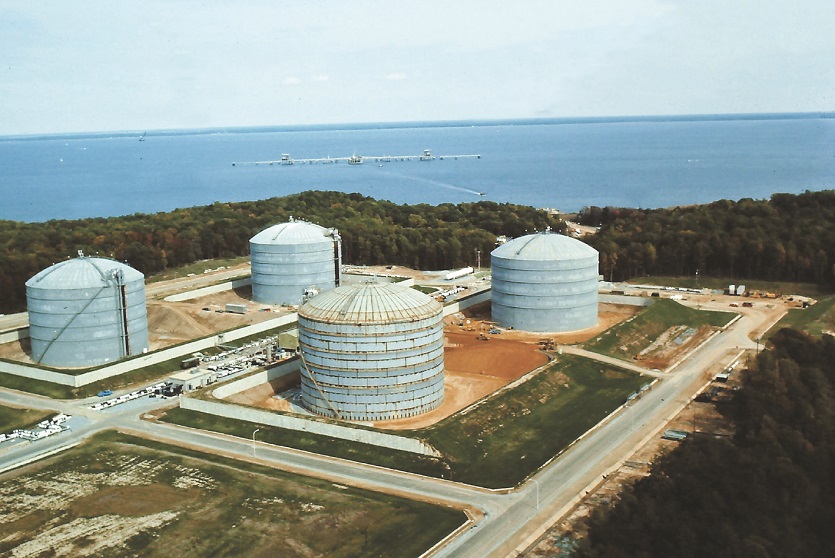
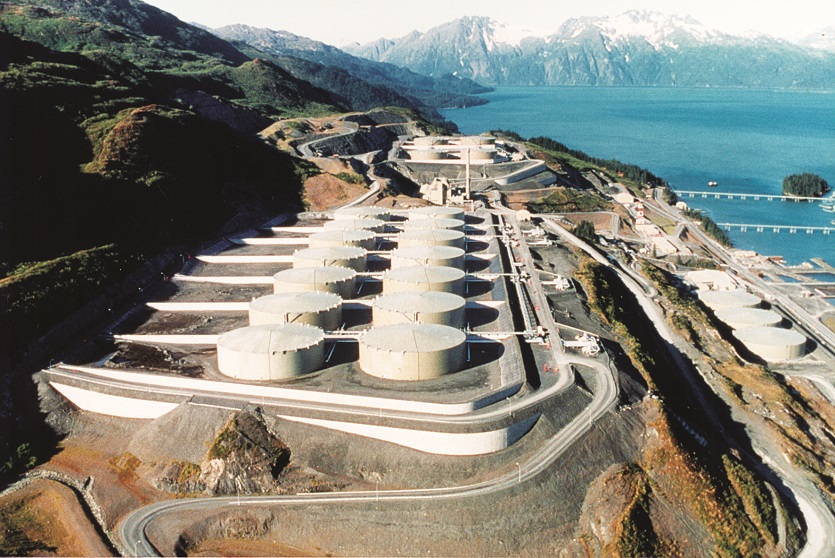
Storage and conveyance
Our teams work with engineers to solve problems relating to storage tank settlement. As opposed to cast-in-place walls, a Reinforced Earth® ring wall mitigates the effects of settlement. These walls can shift naturally with the tank bottom, which controls differential settlement between the center of tank and edge of tank.
For pipeline protection, whether on land or in water, we provide a protective shelter from the elements using either TechRevetment™ geosynthetic formed concrete mattress or TechSpan® concrete arches to protect pipelines from external assault, scour, and to mitigate damage in the event of leakage.
Benefits
Highly stable
The composite Reinforced Earth® mass is a highly stable explosion barrier that impedes the propagation of a blast at ground level and absorbs high levels of energy due to its tolerance for deformation. Resistant to multiple fracturing, our panels minimize the dispersal of debris.
Non flammable
Reinforced Earth® with steel reinforcements is inherently non flammable and highly resistant to thermal variations, which makes it an ideal choice for the construction of structures for the oil and gas industry.
Impermeable
Reinforced Earth® are impermeable when combined with waterproofing. Often used for safety dykes around large tanks of volatile liquid petroleum products, the Reinforced Earth® dyke contains the escaping liquid should a tank rupture.

